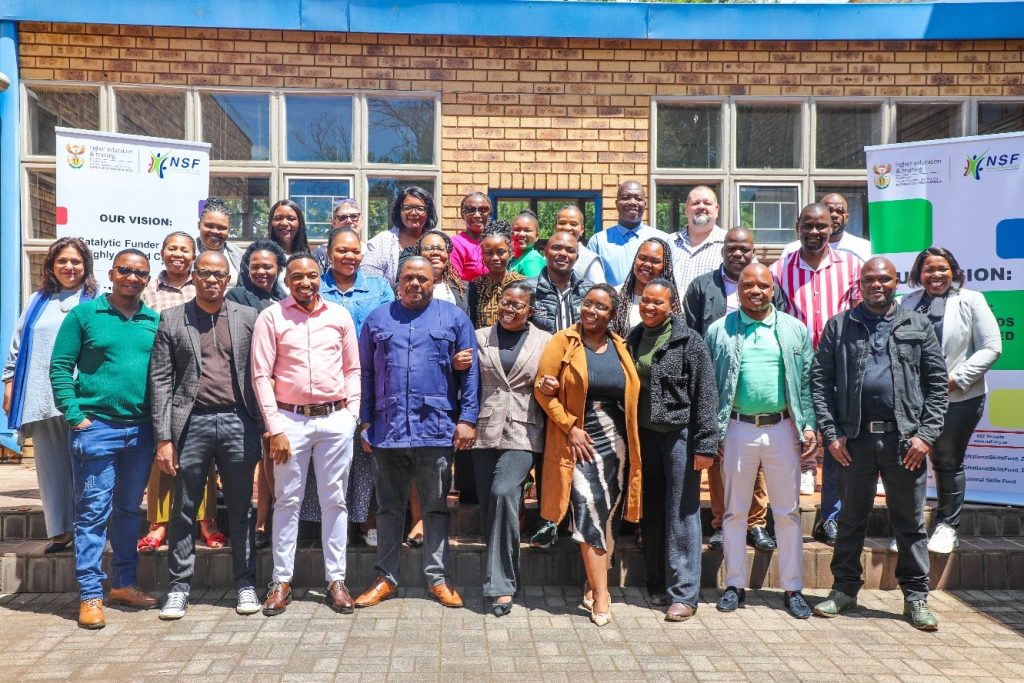The National Skills Fund’s (NSF’s) funding approval of R19,6 million in 2016 enabled the University of Cape Town (UCT) to establish the Hair and Skin Research Lab, Africa’s first dedicated hair and skin research laboratory.
The NSF funding was specifically for sourcing high-technology equipment needed by the laborartory. “This investment has been game-changer,” according to UCT’s head of dermatology, Prof. Nonhlanhla Khumalo.
The facility is contributing to academia and industry. Two scientists were recruited from the laboratory by the University of the Witwatersrand (Wits) as lecturers: one to L’Oréal, a cosmetic company, and another to the Textile Research Institute, a scientific research and education organisation in Princeton, United States of America.
Within three years, the laboratory has graduated one Doctor of Philosophy (PhD) (two expected in 2019), two Masters degrees (two expected 2019) and 16 Advanced Diplomas (11 expected in 2019). “These qualifications did not exist but are now available in the country due to the NSF’s enabling funding”, Prof. Khumalo stated in a report to the NSF in February 2019.
The work of the laboratory has grown significantly in the last three years and it now boasts three distinct programmes, as reported by Prof. Khumalo.
Cosmetic Ingredients Safety Programme
The initial infrastructure for the Cosmetic Ingredients Safety Programme was funded by the NSF and the Services Sector Education and Training Authority (SETA) funded the completion of the infrastructure and the development of the programme. The result was the establishment of the National Cosmetic Ingredients Safety Testing Unit, the first in the country to offer the service.
The National Cosmetic Ingredients Safety Testing Unit has produced 16 graduates (in 2017 and 2018) in the Advanced Diploma in Cosmetic Formulation Science, the first graduate programme to train scientists to formulate cosmetics. This is a blended programme with 10 weeks at UCT and 10 months experiential learning in cosmetic company laboratories nationwide.
Hair Testing in Medicine Programme
The initial infrastructure for the Hair Testing in Medicine Programme was also funded by the NSF and the development of the programme was funded by the South African Medical Research Council and the National Research Foundation.
Hair has a rich blood supply and, as a result, chemicals can be incorporated into hair from the blood. This includes both illicit and drugs used for treatment of diseases such as tuberculosis (TB) and HIV.
The major contribution of the lab in this area of work has been in the understanding of hair curliness and related biochemistry – specifically, how this can influence the reliability of tests done using hair.
For example, very curly hair has higher internal (structural) lipids, which may influence the incorporation of lipid-soluble drugs. Whether this is the case or not has been a research focus of the laboratory’s work and this is important because drug levels may have to be adjusted for hair curvature.
This work is initiated by a multidisciplinary team led by a mechanical engineer coordinating the geometry and mechano-physical properties that will result in the objective characterisation of hair that is not based on race (which is subjective since Caucasian hair may be curly or straight), as is currently the case.
The huge potential of testing hair has been demonstrated in one of the laboratory’s projects, which shows a clear significance in the hair of diabetic adults and children compared to healthy controls. The project has the potential to change the future of clinical practice in this area.
Wound Healing and Skin Scarring Programme
The Wound Healing and Skin Scarring Programme is the newest programme that aims to improve the understanding and treatment of scarring alopecia and keloid scars, mostly prevalent in people of African ancestry.
Funding allocations from the NSF and Services SETA were used to source initial infrastructure, although there is still a need for specific equipment for skin biopsy processing, immunohistochemistry staining and specialised imaging, according to Prof. Khumalo’s report.
There is no effective treatment for keloids – large scars that cause significant disfigurement and emotional distress. Keloids are a neglected area of research worldwide.
As an African facility, the laboratory aims to prioritise and find effective treatments to improve the quality of life of affected Africans. Lessons learnt from skin scarring are likely to be applicable to scarring of internal organs and may give rise to life-saving treatments.
This article was published in the NSF 2018/19 Annual Report



